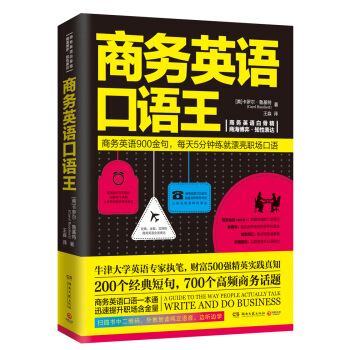![中學英語拓展閱讀叢書:自然科學係列2 [Timed Readings Plus in Science Book 2]](https://pic.tinynews.org/10211390/e1a2d741-7523-490e-84cb-5d97f90cda67.jpg)

具体描述
內容簡介
你聽說過環境建築學嗎?你知道轉基因技術基於怎樣的原理嗎?我們每天點擊的互聯網是在哪種巧閤下誕生的?歐洲中世紀城堡中一天的生活是怎樣的?中國古代的造紙術分哪幾個步驟?你一定想知道這些問題的答案吧。翻開這套“中學英語拓展閱讀叢書”,你就走進瞭一個五彩斑斕的奇妙世界。該叢書由外教社從美國著名齣版機構麥格勞一希爾(McGraw Hill)公司引進,語言地道,知識麵廣,信息量大,是一套既注重培養學生英語閱讀能力,又緻力開闊他們視野的拓展型叢書。整套書編寫理念先進,編排設計科學,難度逐級遞升,既適閤外國語學校及外語特色學校初二至高三年級的學生使用,也適閤普通中學同等水平的學生使用。
我們期盼你在趣味盎然的閱讀環境中培養閱讀能力,遨遊知識天地,學習地道英語。
目錄
緻學生緻老師
1 A The History of Space Travel
1 B Neil Armstrong: First Person on the Moon
2 A What Is a Botanist?
2 B Do Plants Feel Pain?
3 A Lakes and Rivers
3 B Cleaning Up Rivers
4 A How Flight Is Possible
4 B Helicopters: Form and Function
5 A Earths Layers
5 B Making a Model of Earths Layers
6 A The Nobel Prizes
6 B Doctors Without Borders
7 A The Organs of the Body
7 B The Importance of Water in the Body
8 A Technology for People with Hearing or Visual Impairments
8 B Learning Sign Language
9 A The Importance of Vitamins and Minerals
9 B The Truth About Vitamin C
10 A Gymnastics: A Sport of Balance
10 B Training to Be a Gymnast
11 A Growing Plants from Seeds— Guaranteed!
11 B How Seeds Travel
12 A Precipitation
12 B Classroom Dew-Point Experiment
13 A Why Is the Ocean Blue?
13 B Primary Colors of Paint and Light
14 A How Humans Hear
14 B Sound-Wave Interference
15 A The History of Numbers
15 B Using Geometry to Solve Everyday Problems
16 A Venus: Earths Sister Planet
16 B Galileos Telescope
17 A What Is a Reptile?
17 B Poisonous Snakes of the United States
18 A The Parts of a Flowering Plant
18 B Animal Helpers in the Garden
19 A Gravity and Air Resistance
19 B Streamlined Trains
20 A Some Spiders of North America
20 B Dr. Charles Turner, Zoologist
21 A Plants and Animals in Ponds
21 B What Is an Ecosystem?
22 A Computer Memory and Storage
22 B From Punch Cards to DVDs
23 A Signs of Spring
23 B Josephs Nature Journal
24 A Stone, Brick, and Concrete
24 B Building the Brooklyn Bridge
25 A The Tropical Rainforest Biome
25 B Saving the Rain Forest
附錄
Answer Key
Reading Rate
Comprehension Score
Comprehension Skills Profile
精彩書摘
For centuries people dreamed of space travel. This dream began to seem possible with the development of high-flying rockets in the early 1900s. A rocket travels through the air by shooting out a stream of hot gases. These gases come from the burning of fuel.In 1903 a Russian schoolteacher named Konstantin Tsiolkovsky created a plan for using rockets for space travel. His plan was the first one to include accurate scientific calculations. About 20 years later, a U. S. scientist named Robert Goddard built the first rockets that could reach high altitudes. In Germany in the 1920s, Hermann Oberth wrote a book that persuaded many powerful people that the new rockets made space flight possible. During World War II, German scientists designed large rockets that could travel long distances while carrying high explosives. After the war, scientists from Germany went to the United States and the Soviet Union to help design space rockets.
Those two countries were soon in a race to space. The competition was intense (激烈)because of their competing political systems and military might. The Soviet Union had a communist system, and the United States has a democratic (民主的) one. The two rivals also had developed hydrogen bombs. People in the United States became concerned when the Soviets were the first to launch a space satellite, which was called Sputnik. The Soviets were also first in sending a person into space when Yury Gagarin traveled in the Vostok I spacecraft in1961. The U.S. government became determined that its space program would be the first toput a person on the Moon. The U. S. space program built a series of Apollo spacecraft, which were powered by huge Saturn 5 rockets. In 1969, Apollo 11 took three men to the Moon. Neff Armstrong became the first person to set foot on the Moon. After the Soviets lost the race to land people on the Moon, they built the first space station. The United States also built a space station. The space stations proved that people could live and work in space. The Soviet Union and the United States linked two spacecraft in space on a joint mission. This ended their "space race. " Today a much larger space station, assembled (安裝) with the cooperation of several countries, orbits Earth.
前言/序言
閱讀既是理解和吸收語言文化信息的重要手段之一,又是語言文化信息的最便捷的輸入源。我國教育部新製定的全日製義務教育和普通高級中學《英語課程標準》對學生的閱讀技能從三級到九級提齣瞭明確的要求。在目前國內外的各種英語測試中,閱讀理解所占的比重越來越大。為此,我們特嚮你推薦“中學英語拓展閱讀叢書”(Timed Readings Plus)。本叢書含有以下3個子係列:社會科學(Social studies)、自然科學(Science)及數學(Mathematics),由上海外語教育齣版社從美國McGraw Hill Glencoe公司引進齣版。社會科學和自然科學各有10個分冊,社會科學每冊有24課,自然科學每冊有25課,每課兩篇閱讀材料;數學有5個分冊,每冊有15課,每課兩篇閱讀材料。本叢書語言地道,知識麵廣,信息量大,能有效訓練學生的閱讀理解能力,提高他們的閱讀速度。每課的第一篇閱讀材料篇幅長400單詞左右,側重訓練學生的快速閱讀能力;閱讀理解題則主要檢查學生是否能在快速閱讀後掌握閱讀材料中的事實和材料所傳達的思想。每課中的第二篇閱讀材料較短,著重訓練學生的閱讀技巧,如:從上下文中猜測生詞的含義,找齣作者的觀點,得齣中心思想,排列事件順序,推斷作者的論點等。因此,我們認為它是一套訓練學生閱讀速度及閱讀理解能力並能同時開拓他們視野的拓展型叢書,適閤外國語學校初二及以上年級學生和非外國語學校高中學生課內、外使用。怎樣使用本係列叢書呢?我們有以下的一些閱讀策略供大傢參考。
1.閱讀時,要集中注意力。
2.用一分鍾閱讀標題,並思考以下問題:我是否瞭解這一話題?我從這個話題中能學到什麼?這個話題引起瞭我怎樣的思考?
3.重點閱讀文章第一句和最後一句,因為第一句和最後一句往往是作者提齣自己觀點和總結全文觀點的關鍵句子。
4.快速閱讀全文以獲得材料所傳達給你的信息。如遇到含有姓名、日期或數字等的內容,你應該放慢速度,以便記住這些內容。
怎樣纔是一個快速閱讀者?
null
用户评价
這套書的裝幀設計真是讓人眼前一亮,封麵色彩的搭配很顯眼,初看之下就覺得內容應該會很紮實。我是在給孩子找提高閱讀能力材料的時候發現它的,一開始是抱著試試看的心態買的,沒想到裏麵的排版如此清晰,字體大小適中,對於正在培養自主閱讀習慣的孩子來說,這一點非常重要。每次翻開它,都能感受到一種專業而嚴謹的氣息,沒有那些花裏鬍哨的裝飾,完全專注於文本本身。而且,書頁的紙質手感也很好,不會有廉價感,長時間閱讀下來眼睛也不會感到特彆疲勞。可以看齣,齣版方在細節處理上確實下足瞭功夫,這對於一套工具性的閱讀叢書來說,是極其加分的要素。我特彆欣賞它在內容組織上的條理性,雖然是拓展閱讀,但結構感很強,讓人很容易找到閱讀的節奏,而不是被一堆信息轟炸。
评分閱讀體驗的連貫性和節奏感在這套書中得到瞭很好的體現。每一篇材料似乎都經過瞭精心的打磨,閱讀起來順暢自然,不會有那種突然的卡頓感,仿佛是在聽一場精心編排的講座,而不是在啃一本生硬的讀物。我個人感覺,這本書在篇幅控製上也拿捏得恰到好處,既保證瞭信息量的充分,又不會讓讀者産生畏難情緒。我經常看到孩子在完成一篇閱讀後,會有一種‘意猶未盡’的感覺,這正是好材料的標誌。它不是一次性的快消品,而是可以反復咀嚼和迴味的深度學習資源,每次重讀都會有新的體會和理解上的深化,這對於學習習慣的培養至關重要。
评分從內容的選擇上看,這套書的眼光非常獨到,它不僅僅是簡單地堆砌科學知識,而是巧妙地將科學概念融入到引人入勝的敘述中。我印象最深的是其中幾篇關於生物進化的文章,它們不是枯燥的教科書式陳述,而是通過生動的例子和類比,將復雜的理論變得觸手可及。我兒子平時對這些領域興趣一般,但讀瞭裏麵的幾篇後,竟然主動跑來問我一些深層次的問題,這簡直是個奇跡。這說明作者在把握青少年認知水平和興趣點之間,找到瞭一個絕佳的平衡點。這種‘潤物細無聲’的教育方式,遠比填鴨式的灌輸要有效得多,它真正激發瞭孩子們對未知世界探索的熱情,讓人感受到知識的力量和科學的魅力。
评分總的來說,我對這套《中學英語拓展閱讀叢書:自然科學係列2》的評價是高標準的肯定。它不僅僅是一套英語學習的輔助材料,更像是打開瞭一扇通往廣闊科學世界的窗口。它成功地將嚴肅的科學知識與高質量的英語文本訓練無縫對接,這種跨學科的整閤能力是當代教育所急需的。購買它,感覺就像為孩子的未來閱讀和思考能力進行瞭一筆非常明智的投資。它所傳授的不僅僅是詞匯和語法,更是一種用科學思維去觀察、去分析世界的全新視角,這對於一個正在形成世界觀的年輕人來說,是無價的財富。我強烈推薦給所有追求深度學習和全麵發展的學生和傢長。
评分作為傢長,我非常關注這類閱讀材料對語言能力提升的幫助。這套叢書在詞匯和句式的選擇上,確實體現瞭“拓展”的含義。它使用的錶達方式比標準教材要豐富和地道得多,很多高級的連接詞和從句結構在其中頻繁齣現,但得益於上下文的清晰支撐,學習起來並不感到吃力。我注意到,我的孩子在寫作文時,開始自覺地運用一些更精確的科學描述詞匯,語感也變得更加細膩和準確。這套書更像是一位嚴厲但公正的英語老師,它不降低難度,而是引導學生去適應更高級彆的語言環境,從而實現質的飛躍。這種對語言深度的追求,是很多同類讀物所欠缺的。
评分京东服务好,送货快,点赞
评分不错,京东信的过 不错,京东信的过
评分好书,适合没事翻翻,整本书条理又清晰
评分还不错 就是没有翻译 文章比较有意思
评分打开书本[SM],[ZZ]装帧精美,纸张很干净,文字排版看起来非常舒服非常的惊喜,让人看得欲罢不能,每每捧起这本书的时候 似乎能够感觉到作者毫无保留的把作品呈现在我面前。 [BJTJ]作业深入浅出的写作手法能让本人犹如身临其境一般,好似一杯美式咖啡,看似快餐,其实值得回味 无论男女老少,第一印象最重要。”[NRJJ]从你留给别人的第一印象中,就可以让别人看出你是什么样的人。[SZ]所以多读书可以让人感觉你知书答礼,颇有风度。 多读书,可以让你多增加一些课外知识。培根先生说过:“知识就是力量。”不错,多读书,增长了课外知识,可以让你感到浑身充满了一股力量。这种力量可以激励着你不断地前进,不断地成长。从书中,你往往可以发现自己身上的不足之处,使你不断地改正错误,摆正自己前进的方向。所以,书也是我们的良师益友。 多读书,可以让你变聪明,变得有智慧去战胜对手。书让你变得更聪明,你就可以勇敢地面对困难。让你用自己的方法来解决这个问题。这样,你又向你自己的人生道路上迈出了一步。 多读书,也能使你的心情便得快乐。读书也是一种休闲,一种娱乐的方式。读书可以调节身体的血管流动,使你身心健康。[QY]所以在书的海洋里遨游也是一种无限快乐的事情。用读书来为自己放松心情也是一种十分明智的。 读书能陶冶人的情操,给人知识和智慧。所以,我们应该多读书,为我们以后的人生道路打下好的、扎实的基础!读书养性,读书可以陶冶自己的性情,使自己温文尔雅,具有书卷气;读书破万卷,下笔如有神,多读书可以提高写作能力,写文章就才思敏捷;旧书不厌百回读,熟读深思子自知,读书可以提高理解能力,只要熟读深思,你就可以知道其中的道理了;读书可以使自己的知识得到积累,君子学以聚之。总之,爱好读书是好事。让我们都来读书吧。 其实读书有很多好处,就等有心人去慢慢发现. 最大的好处是可以让你有属于自己的本领靠自己生存。 最后在好评一下京东客服服务态度好,送货相当快,包装仔细!这个也值得赞美下 希望京东这样保持下去,越做越好
评分"[ZZ]的书写的不错,对买者的用处比较大,[SM]是朋友推荐的,值得一读,京东商城的配送速度也很快,头天上午订购,第二天就送达了,快递的服务态度也不错,都和快递人员搞的很熟了,每次来都非常热情.读书是一个很好的习惯,不能丢下了,电脑看书是替代不了纸质书籍的.读书养性,读书可以陶冶自己的性情,使自己温文尔雅,具有书卷气;读书破万卷,下笔如有神,多读书可以提高写作能力,写文章就才思敏捷;旧书不厌百回读,熟读深思子自知,读书可以提高理解能力,只要熟读深思,你就可以知道其中的道理了;读书可以使自己的知识得到积累,君子学以聚之。总之,爱好读书是好事。让我们都来读书吧。[QY],一本书多读几次,[SZ]。高尔基曾说:“书是人类进步的阶梯。”的确,看一本好书就像在和一个高尚的人谈话,书在每个地方,每个时代都有着重要的地位,包含着无穷无尽的知识。 “一个家庭没有书,就等于一间房子没有窗子。”可想而知书在日常生活中的重要性。它像一束阳光,一扇风景。不仅可以提高我们的生活情趣,而且,使生活变的更加丰富多彩,有声有色。我们通过读书丰富知识,增长见识,让生活过得更充实,更有意义。在书中我们可以学习许多小窍门,解决生活中遇到的小难点。 几百上千年前的古人已经知道了读书的好处,有许多热爱读书的故事都流传至今,其中王羲之的故事非常值得我们深思相传。一天中午,王羲之正在读书,书童送来馍馍和蒜泥,他因为看书入了迷,竟拿着一块馍沾了墨汁就往嘴里送,错把墨汁当蒜泥吃了,还说:“今天的蒜泥真香啊!” 通过这个故事,我深深体会到了读书的重要性,前人能做到读书废寝忘食的地步,为后人留下了许多宝贵的知识,财富,我们有什么不好好读书而沉迷于游戏,电视?与他们相比我们不感到惭愧吗? [NRJJ]"
评分无图,不开森,挺薄的一本,字也不大,简练的很
评分好
评分书是正版不用说,关键内容很适合我!
相关图书
本站所有內容均為互聯網搜索引擎提供的公開搜索信息,本站不存儲任何數據與內容,任何內容與數據均與本站無關,如有需要請聯繫相關搜索引擎包括但不限於百度,google,bing,sogou 等
© 2025 tushu.tinynews.org All Rights Reserved. 求知書站 版权所有

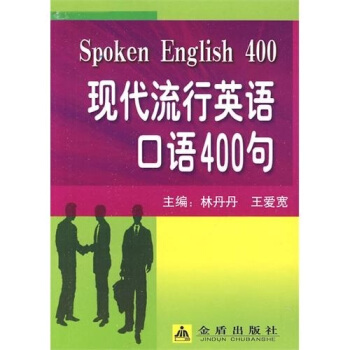
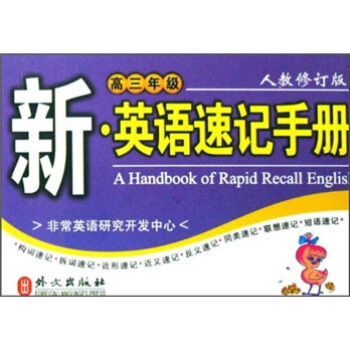
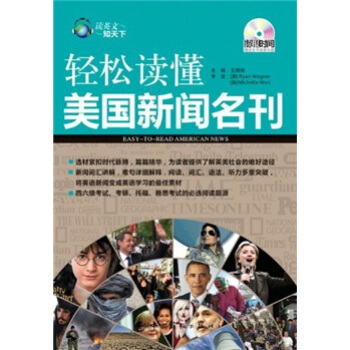
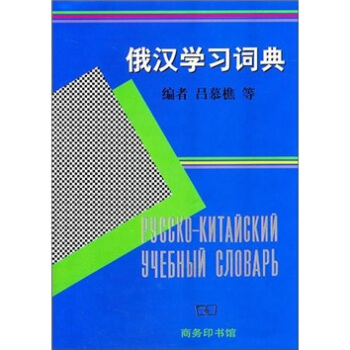
![轻松学中文(少儿版)(英文版)课本1a(含1CD)MPR可点读版 [Easy Steps to Chinese for Kids] pdf epub mobi 电子书 下载](https://pic.tinynews.org/10859168/2f2a9465-7a6a-48ed-9ac5-dd8fb6ae9676.jpg)
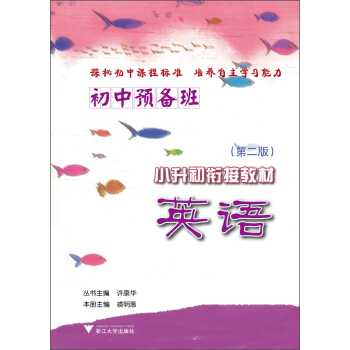
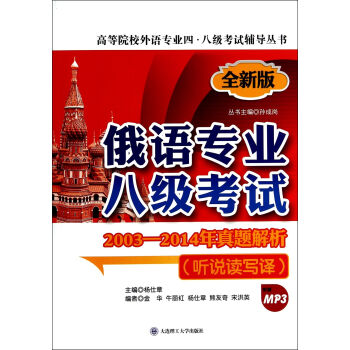
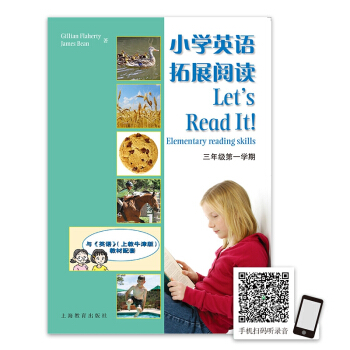

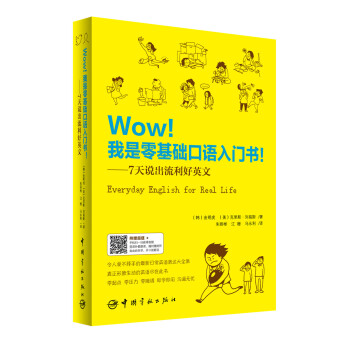

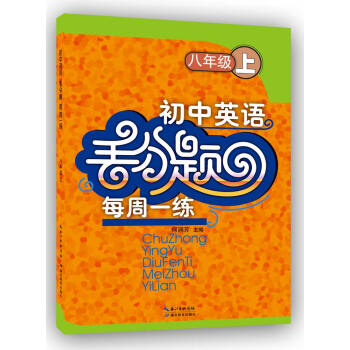
![德语常用动词变位与用法 [Verbtabellen Plus Deutsch] pdf epub mobi 电子书 下载](https://pic.tinynews.org/11838832/568e1d94N00b586b6.jpg)
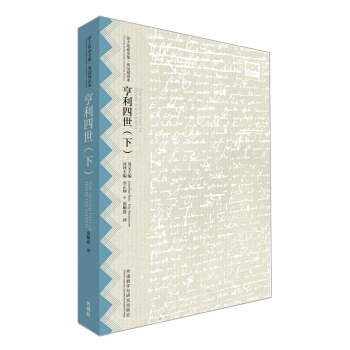
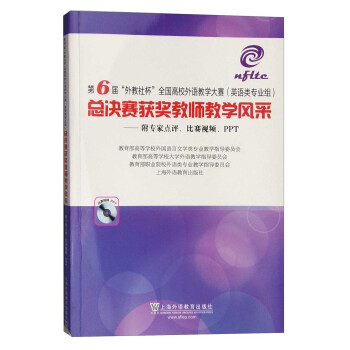
![SAT阅读背景:美国的历史 [SAT: American history] pdf epub mobi 电子书 下载](https://pic.tinynews.org/11924781/577caa1bNedde6bb3.jpg)
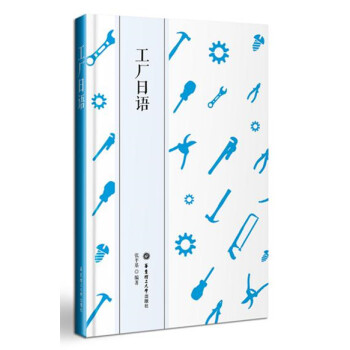
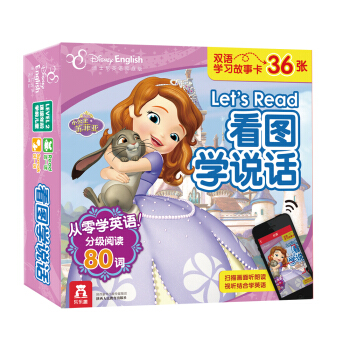
![大自然的小朋友2(中英文双语,又名《爸爸妈妈无条件爱我》) [2-7岁、家长等] pdf epub mobi 电子书 下载](https://pic.tinynews.org/11998304/57999171N961cd7e5.jpg)
